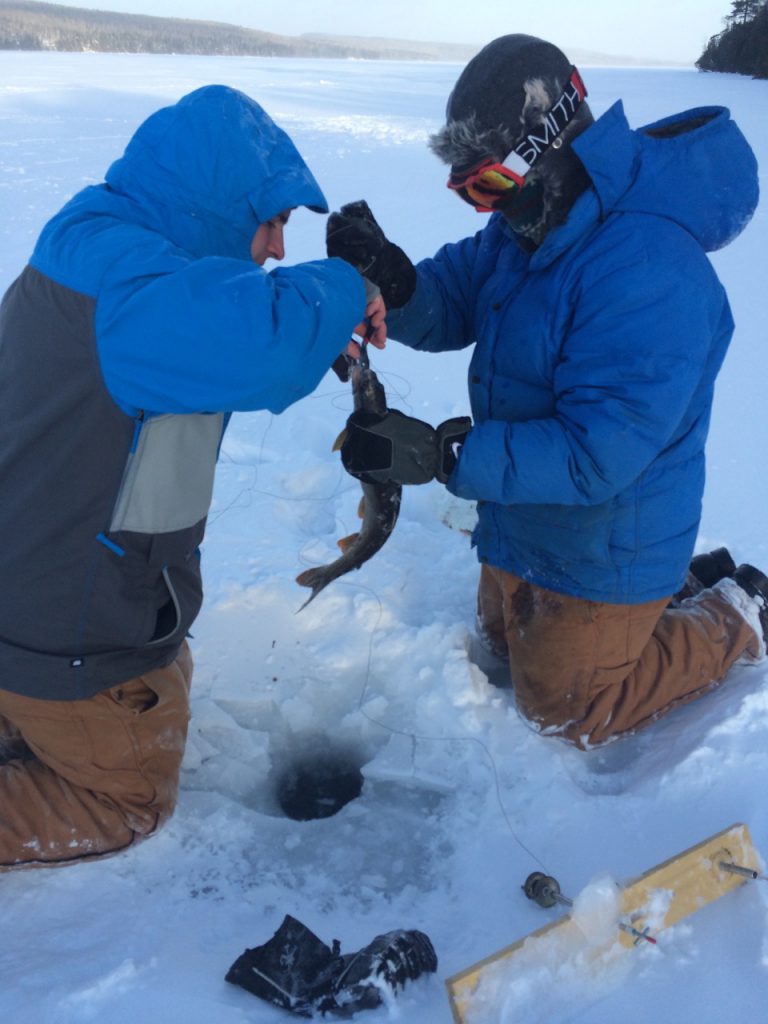Scott Schilling is a Gunflint Trail cabin owner and before that, he was a longtime Tuscarora guest who went on countless Boundary Waters and Quetico fishing trips. He answered our call for guest posts with this humorous memory of his first-ever Quetico fishing adventure and some great vintage canoe country photos.
Please note, all opinions expressed in this post are those of Scott and Scott alone. They do not necessarily reflect the opinions of Tuscarora, Tuscarora staff, or Tuscarora guests . . . about engineers. And remember, always wear your lifejacket!
Scott writes:
Every May, for 15 years, we’d drive 700 miles from Illinois to spend a week in Quetico. We’d stay in a Tuscarora bunkhouse for our first night. After getting minimal sleep because of the anticipation, we’d get a tow on Saganaga to save us several hours of canoeing and to ensure we could get to our designated campsite by dark, as it was several hours of canoeing, and back then, going through customs on the water, portaging etc. Our tow boat would then drop us off in the water, and say “See you in a week . . . . Hopefully.”
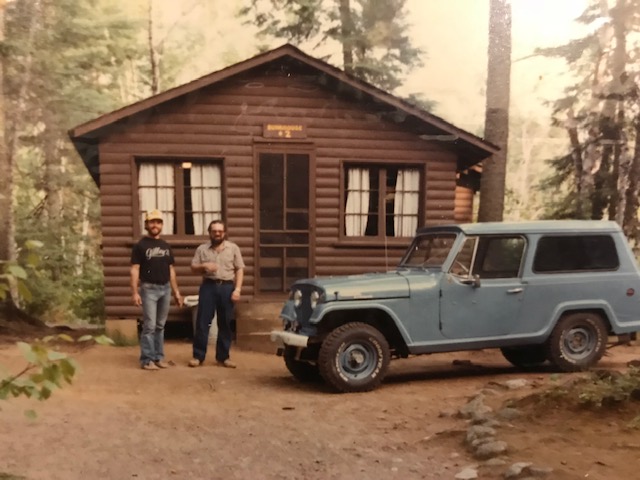
We’ve seen Cache Bay with 3-4’ waves and calm as glass. We sometimes camped just prior to Silver Falls for the first night, but most years we made it to the same island up in Saganagons to get camp established the first night. Our first trip ever was just after ice out.
Imagine the excitement . . . . We’d spent a year planning, working out on a steep hill with a backpack full of weight to get our bodies ready, and figuring out what and what not to pack. I’d listened to my engineer friend for a year, with all his extreme cautions, lists etc. I’m the opposite . . . like whatever, I only need a few things.
Now, on our first morning of our first canoe trip ever, it was very cold and raining, but the weather was irrelevant. I knew on my first cast, I’d probably catch a world record fish.
With me in the front seat, we pulled off our island campsite, got stabilized for a minute, and I grabbed my brand-new Garcia Ambassador 5500C reel that I was so proud of. As we just rounded the corner of an island, I saw my opportunity for my first cast ever. I swung my rod back to let my Smithwick Rogue – my favorite lure which has worked all over the country – fly out parallel down the bank.
My hands were already wet from the rain. As I palmed that bait caster to make that long cast, my first cast ever up there, the reel slipped out of my hand. It shot 3-4’ up into the air and I watched it come down, probably 3’ from the canoe.
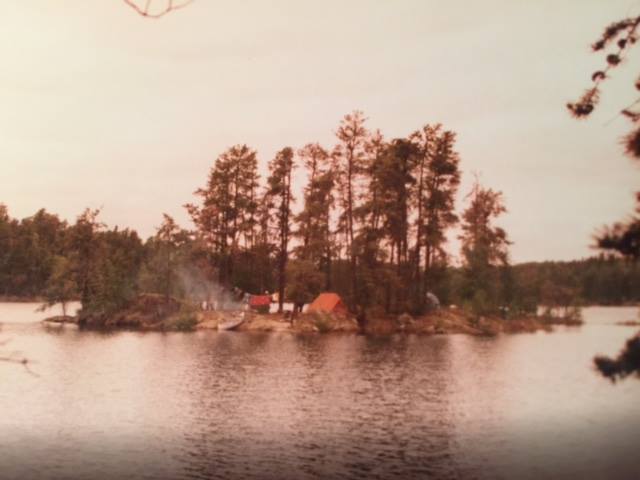
I instinctively went to reach out and grab it, as I wasn’t losing my new rod reel for the week. It was just far enough from the canoe and as I reached for it, I capsized the canoe. My engineer friend was already screaming and cussing at me, when my head popped out of the water. “Now what, you idiot?” he yelled. “We just lost everything for the week!”
I’d never been canoeing before this, never capsized a canoe, never been in ice out freezing water with several layers of clothes and boots on, never been on a trip with this anal engineer, never been stranded on an island. Once he stopped yelling, he said, “Don’t leave the canoe, it won’t sink.”
We managed to drag the canoe full of water and seemingly weighing about 300 pounds to the island. As we slid up the rocks in all our wet clothes, I was like, oh crap, what now? My buddy just kept saying, “That’s it. No fishing now for a week.”
All our rods and reels were at the bottom of the lake.
We managed to empty the water out of our canoe. We saw our paddles and life vests (of course they weren’t on) floating in the lake. We got back into the canoe and hand paddled out to get them.
Then I noticed something.
The Rogue I was using was a topwater lure, and I saw it floating on the water. Could I possibly pull my rod up? My buddy was still lipping off the whole time. As I grabbed the Rogue, I started to pull my line in very carefully as I had released the spool to cast. Would my knot hold at the bottom of the spool? It felt quite heavy for some reason, and after pulling about 50 yards of line, I started to see several rods coming up!
All of the rods, we had in the canoe had miraculously entangled somehow, and in one motion I grabbed them all. Now I proudly told my anal engineer buddy to shut up. All we lost was one compass . . . .Who needs that anyway?!
Froze, numb, dumbfounded, and disarrayed, we went back to our camp, managed to get a blazing fire started. We thawed out, warmed up, recalibrated, laughed, and started over.
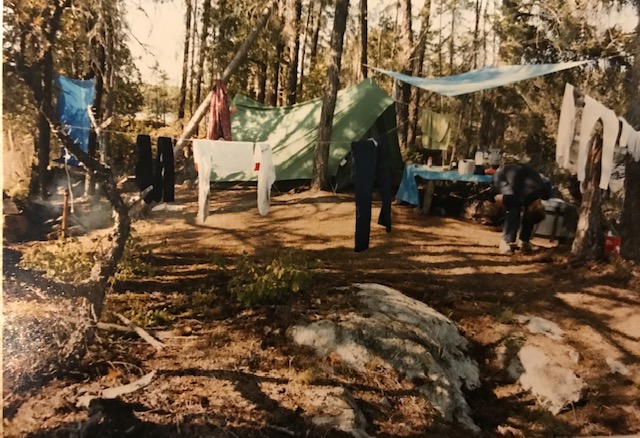
We went on to have a phenomenal week of fishing. Believe it or not, we were able to save two other canoers that week. They were the only other people we saw during the trip and they had capsized in the middle of Saganagons and were in rough shape when we found them.
That was the first week of what’s now been 43 years up there. Couldn’t get that sitting on a couch in Illinois.

Do you have a story you’d like to share with Tuscarora guests? Email us the text and some photos to us at info@tuscaroracanoe.com. We’d love to share it!
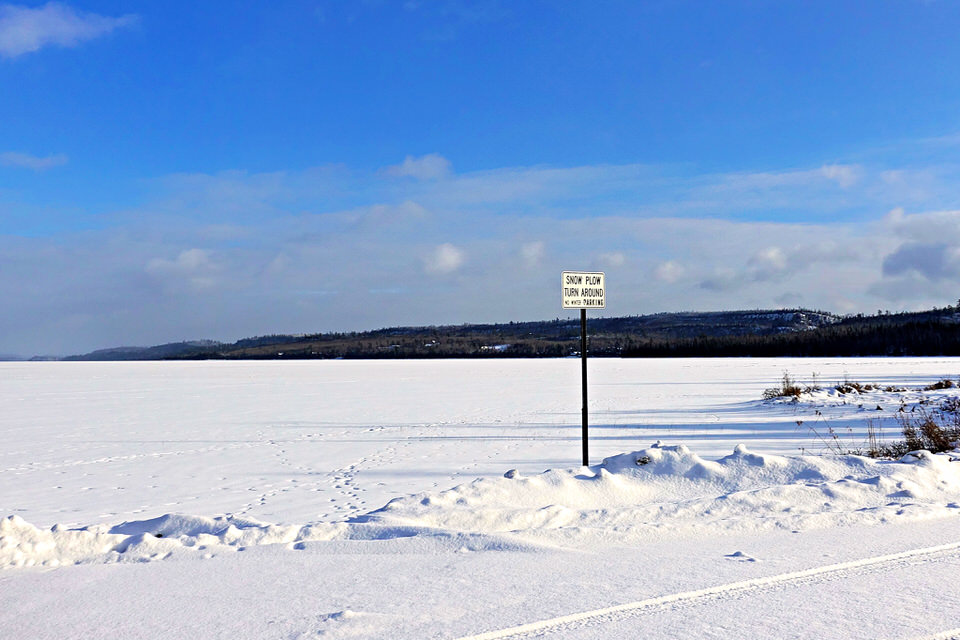 Before heading up the Gunflint Trail for winter camping or ice fishing, make sure you know where to park. Winter parking on the Gunflint Trail often surprises first-time winter visitors because many of the public landings used for summer Boundary Waters trip starts aren’t plowed out. In fact, parking on the Gunflint Trail in the winter can feel like a kind of wink-y, “gotta be in the know” sort of situation.
Before heading up the Gunflint Trail for winter camping or ice fishing, make sure you know where to park. Winter parking on the Gunflint Trail often surprises first-time winter visitors because many of the public landings used for summer Boundary Waters trip starts aren’t plowed out. In fact, parking on the Gunflint Trail in the winter can feel like a kind of wink-y, “gotta be in the know” sort of situation.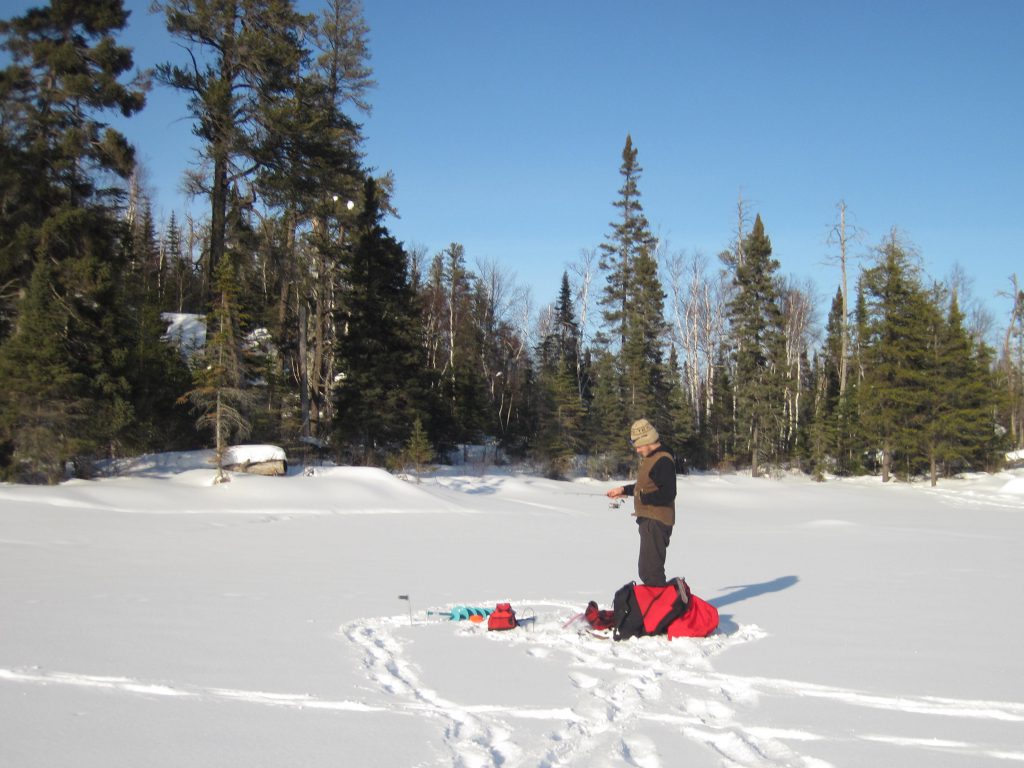 We spend most of our free time in the first three months of each year ice fishing for lake trout. Because our business keeps us busy all summer long, in any given year, we spend considerably more time fishing in “hard water” conditions than we do on open water.
We spend most of our free time in the first three months of each year ice fishing for lake trout. Because our business keeps us busy all summer long, in any given year, we spend considerably more time fishing in “hard water” conditions than we do on open water.